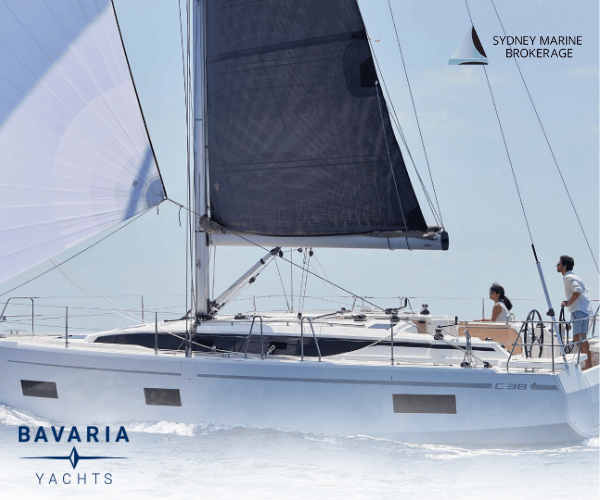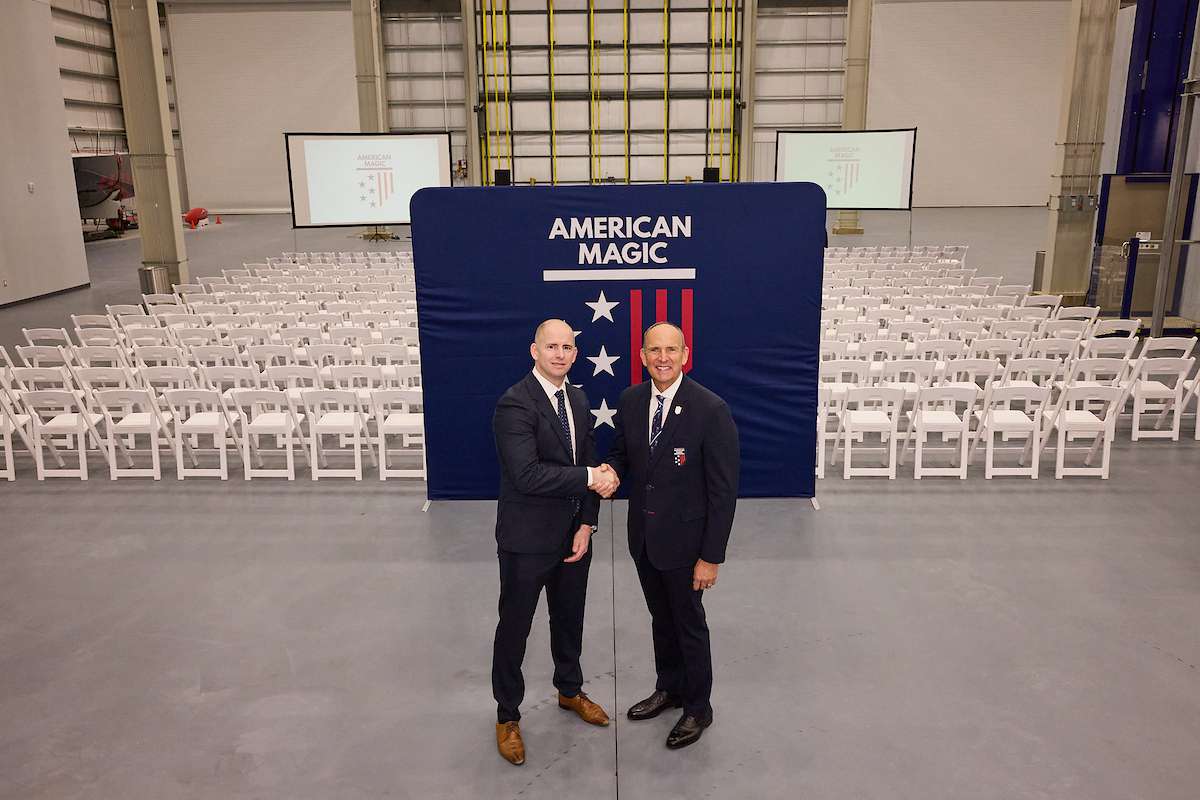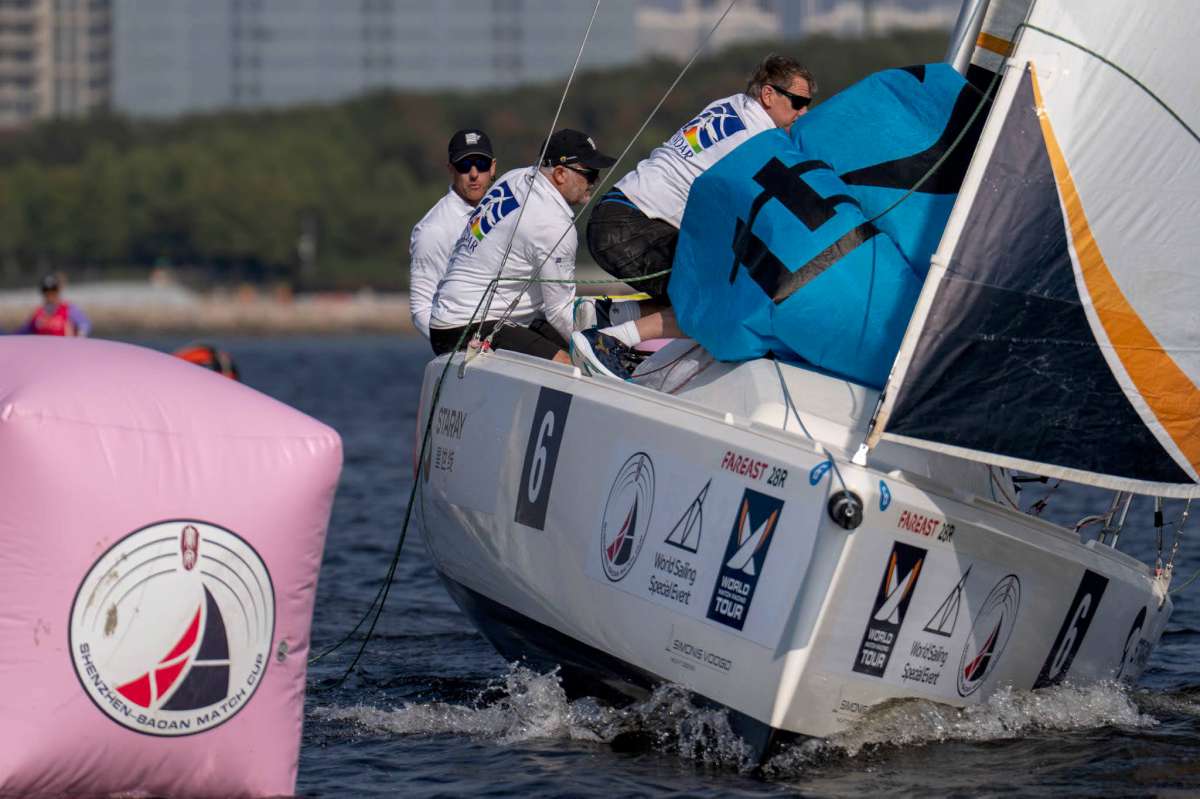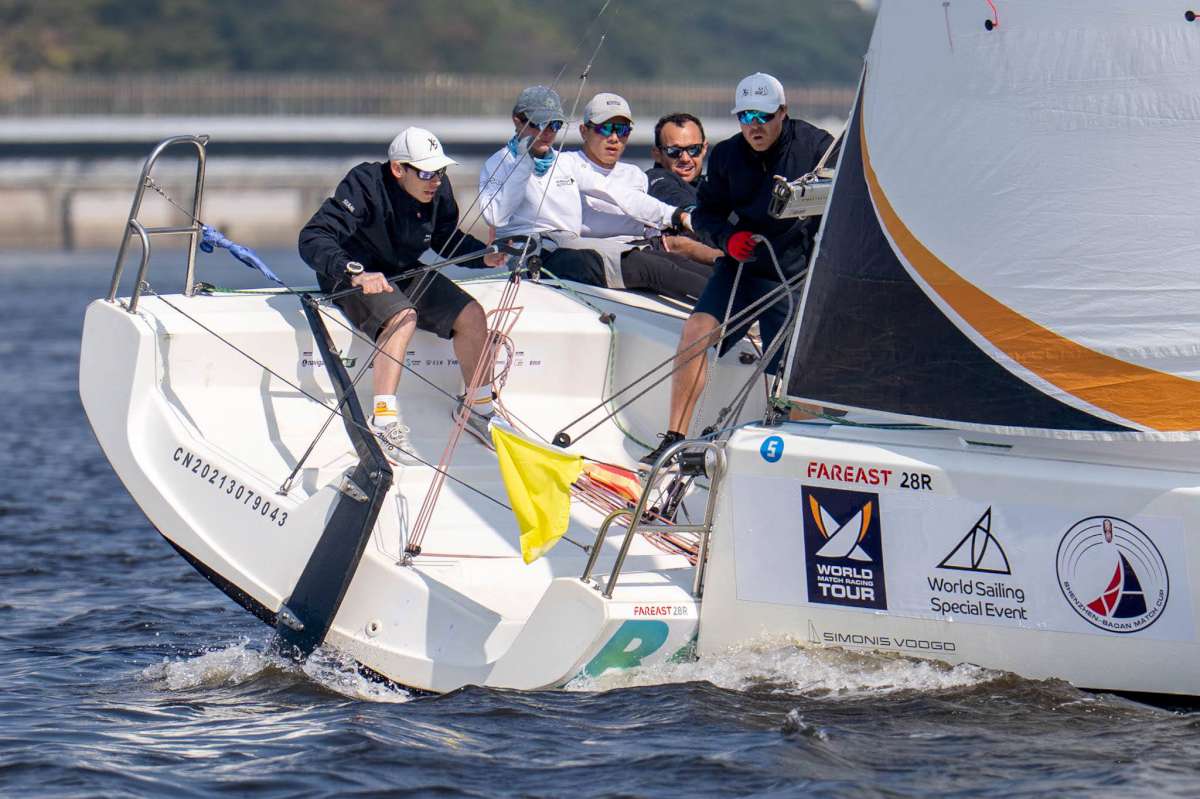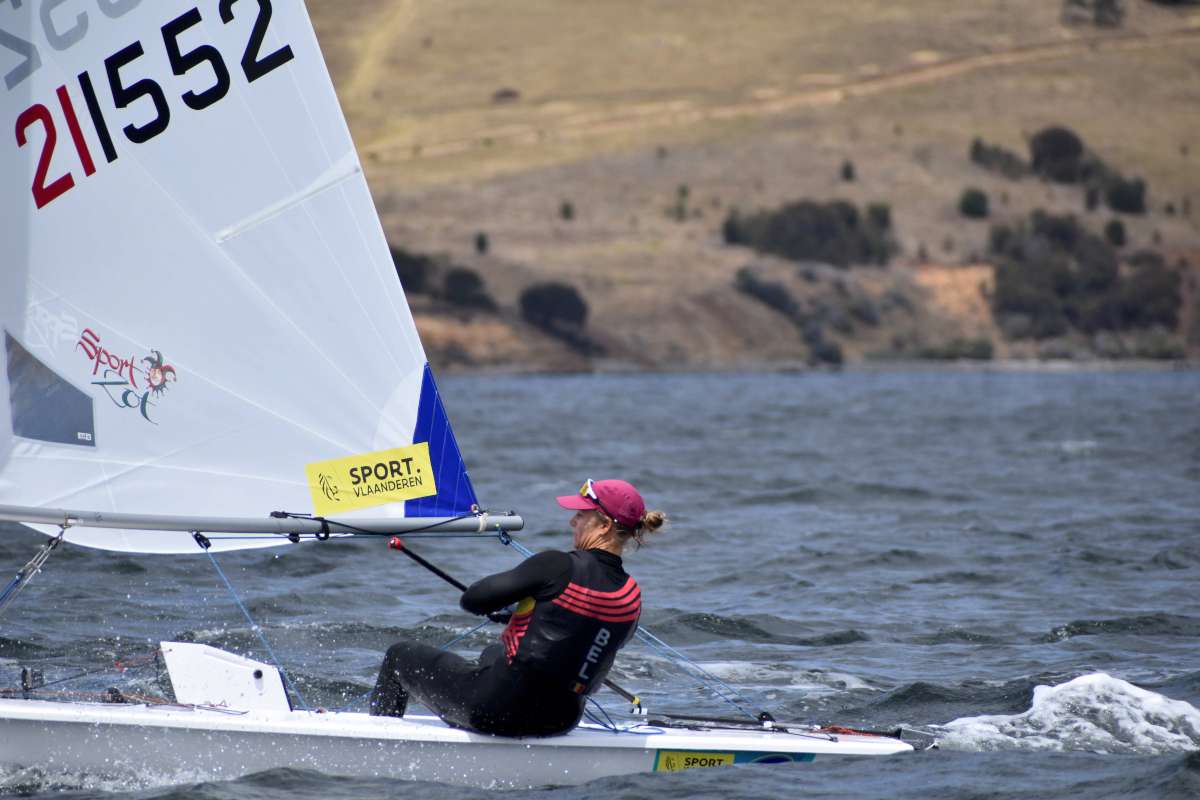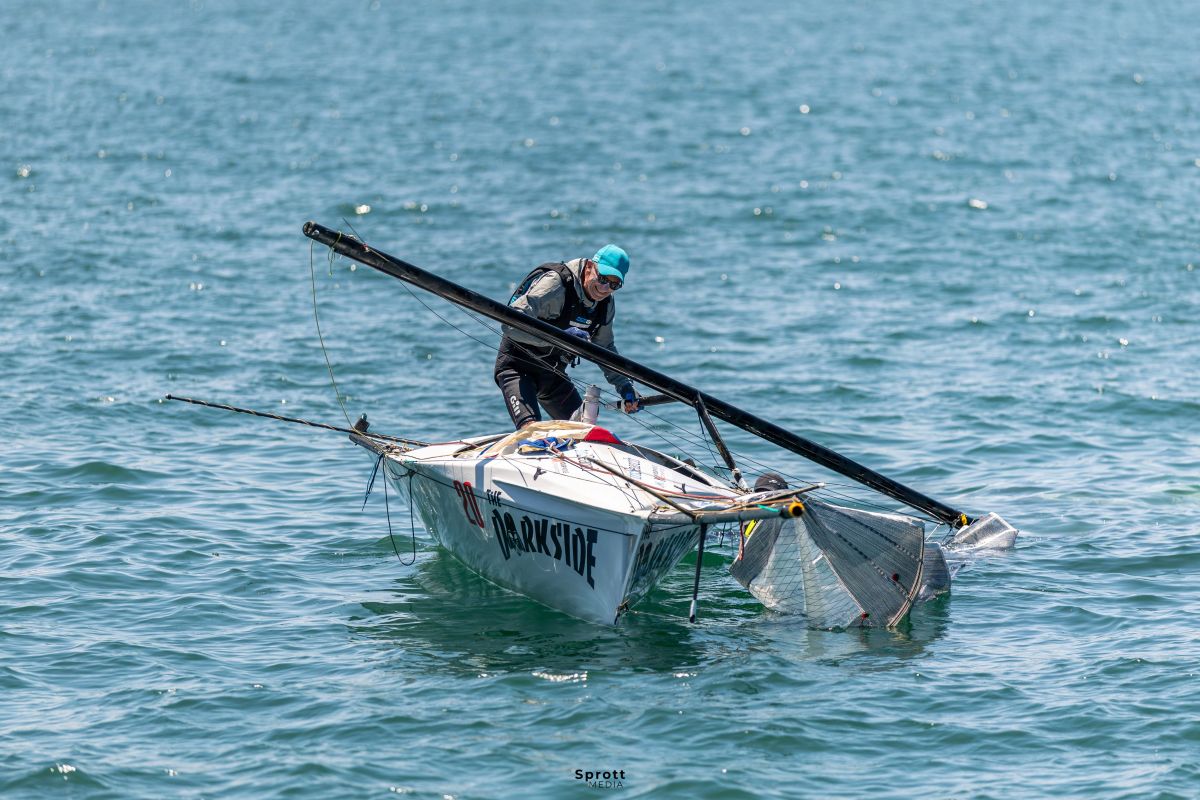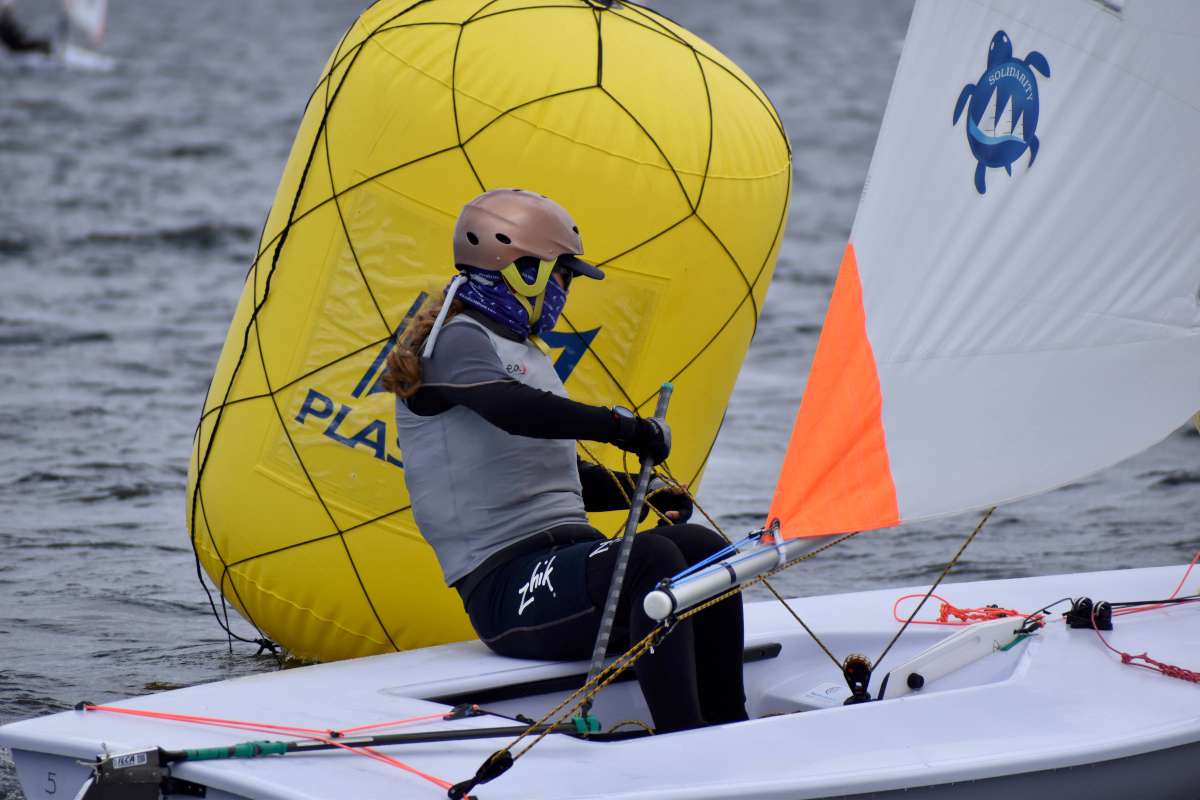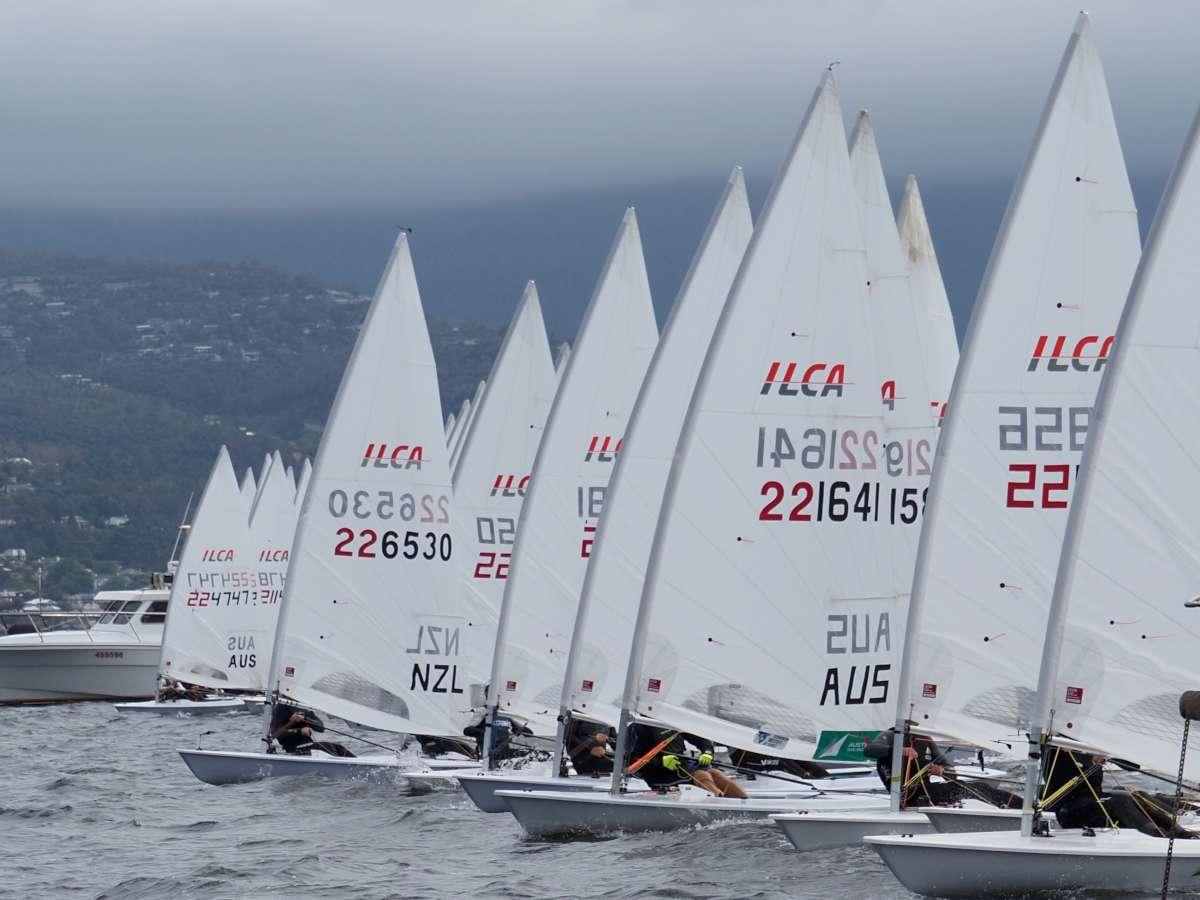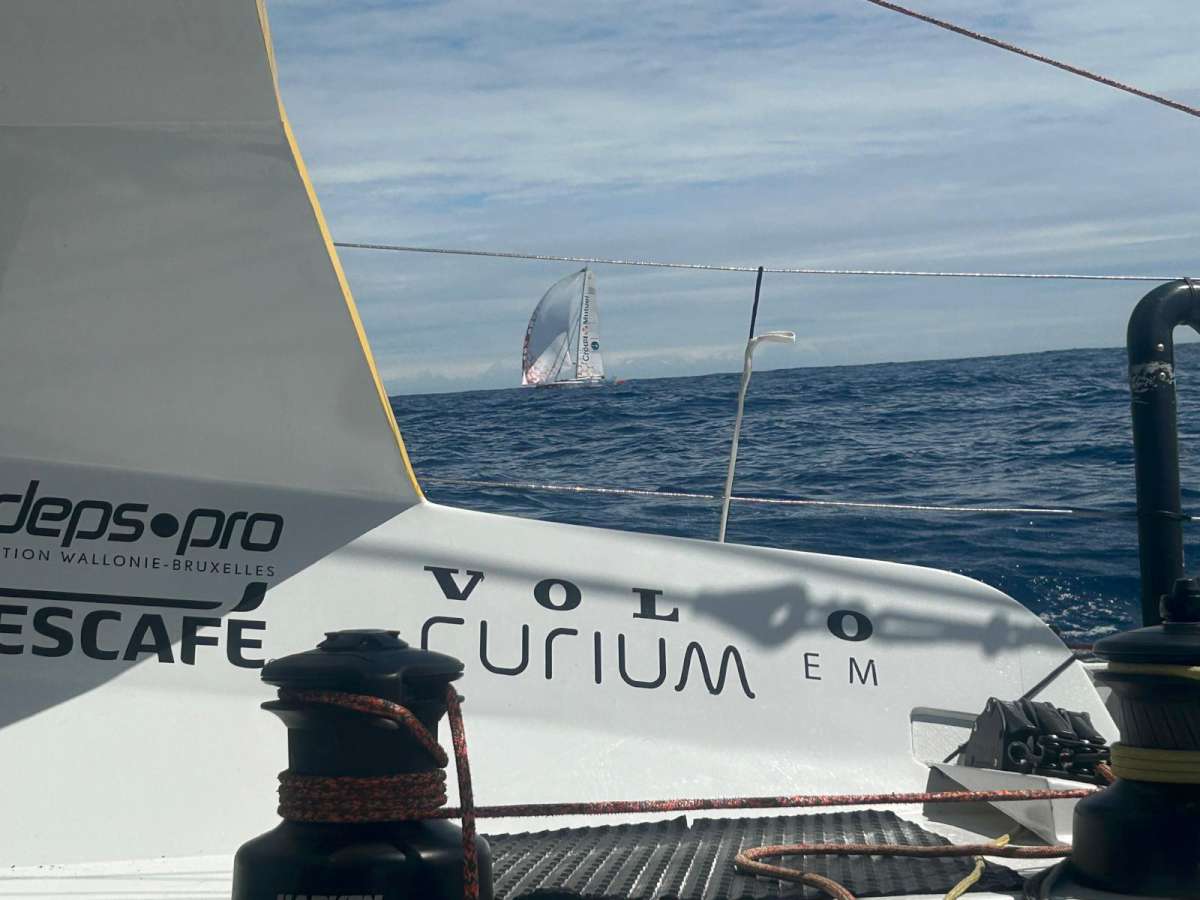I had been toying with the idea of giving up work for some time when we got the phone call. A close friend in her late fifties, fit and healthy, non-smoker and moderate drinker, had died suddenly and unexpectedly.
That was all the encouragement I needed. Life is short and you do not know what is around the corner.
The financial adviser agreed that a moderate lifestyle could be maintained without a regular income and so, a few months later, the first of my ‘gap’ years began. Last November, after a year of getting ready and two shakedown trips to Tasmania and the Whitsunday Islands, it was finally time to start on our round the world cruise.
The plan is not to circumnavigate as quickly as possible or to do anything particularly original, simply to follow the beaten path that so many others have sailed before and see what happens along the way.
First step: cross the Tasman Sea to New Zealand.
Getting ready to go
We were advised that the best time to go was late November. Our boat, X-Pat, is an X-43 X-Yacht built in Denmark, which we have enhanced for cruising by upgrading the electrical systems and adding a second diesel tank.
We have also added solar panels and a hydro-generator and purchased a Hydrovane self-steering system, so the boat is a lot more comfortable now than originally. Although Pat and I can handle her on our own, a long passage with overnight watches of four hours each, is unappealing and probably unsafe as you have no back-up if something happens to one of you.
It is bad enough when all goes well but if there is a problem you end up with two fatigued people to sail the boat, which is not an ideal situation. So we scouted for a third crew member.
Fortunately for us, our friend Gywn responds well to spur-of-the-moment invitations and, with only a few weeks’ notice, he agreed to take a month off work, fly halfway across the world from his home in Wales and join us on our passage.
His earliest arrival date set our timetable and the weather was very co-operative. It was horrible right up until the day before we were hoping to leave, then the winds turned and became much more favourable. So Gwyn had one night on the boat to get acclimatised before we set off.
We departed from Newport marina near Brisbane for Opua on the north east coast of North Island New Zealand, a journey of approximately 1500 nautical miles, on the 28th November 2017.
We had heard many different accounts about the process of clearing-out of Australia, as well as some horror stories. As a result, we had spent several hours by phone and e-mail trying to get a conclusive answer as to what was needed. In the end, it was simple: there are departure forms to complete and you are advised to enumerate all the equipment on the boat to avoid being taxed on it when you return. However, if the forms are complete and the passports in order, there is not a lot else to clearing out. You do not, contrary to what we had been told, need to temporarily export your boat and that certainly made the process a whole lot simpler.
Two friendly customs officials boarded our boat at the appointed time, checked the paperwork and stamped us out.
Last minute panic
After clearing out we had to wait for high tide to get out of the marina as our boat has a deep draft.
While waiting, I scratched at some bites that had appeared on my left arm. Then I noticed I had bites on my left ankle and neck as well. I am normally pretty repellent to mosquitoes and am the last person to get bitten but, for some reason, I seemed to be covered in bites. Suddenly a horrible thought crossed my mind: on the previous weekend we had visitors, one of whom had shingles. Could this be the start of chicken pox or shingles?
Consensus was that it was unlikely but that we could not risk a ten day crossing if I was going to be ill, not to mention the problems it might cause trying to get into New Zealand. This necessitated a frantic hunt for a doctor who could see me as soon as possible. We had already cleared out of Australia and were supposed to be gone within eight hours, so we could not exactly hang around.
Fortunately, we found a practice that said they could squeeze me in and Julian, who had come to see us off and, luckily for us, had his car there, whizzed me off to be checked.
Thankfully the doctor confirmed that the bites were exactly that, just bites, we could all relax again. Back on the boat, we wasted no time, Julian tossed us our lines and waved us good-bye and off we went.
Gas!
Crossing Moreton Bay was uneventful but once we rounded Cape Moreton, the remnants of the bad weather that had been keeping everyone at home for the previous few weeks meant that we encountered some very messy seas. We hoisted the sails and immediately were very close-hauled on a starboard tack.
Once we were safely underway Pat decided to get some rest as he was on night watch first, so he went below while Gwyn and I sat chatting. Suddenly an alarm went off. It was not one I recognised, and I could not find any indication of what it meant on the plotter.
Pat’s sleepy voice came from his cabin, “It’s the gas alarm.”
We located the off button and flicked it. But when we switched it back on the alarm immediately went off again. Hurriedly, we turned off all the valves to the gas bottle but the alarm would not be silenced.
The sensor is in one of the bilges, so we removed the floorboards to take a look. The bilge was full of water! This was not a good way to start our trip.
We had a leak fixed recently and had been checking the bilges on a daily basis. This one had definitely been bone dry just before we left. Gwyn and I raced around the boat, closing stop-cocks and looking for places where the water could be coming in.
Eventually, it was Pat who, emerging sleepily from his bunk, realised that it was our water tank leaking. On a starboard tack, the water tank is tipped in such a way that, when overfull, it leaks from the inspection cap and we had presumably been too enthusiastic when filling it.
That was a relief. All the floorboards were replaced and we put the kettle on.
Night time
As we had all just got back onto the boat, as night set in, we opted for a conservative sail pattern and put two reefs in.
Gwyn and I had taken our seasickness prophylactics, but I could see by the way he was staring rather fixedly at the horizon that he was feeling as queasy as I was. Even Pat, who has a cast-iron stomach when it comes to sailing, was looking a little green around the gills. It did not bode well!
The beauty of having three people on board means a 3-3-3-3-4-4-4 watch system can be maintained. This gives you at least six hours between watches, ensuring that you get a reasonable amount of rest.
My first watch was to be midnight until 3am so, after dinner, I decided to go below and get some rest. Our boat has three cabins: a v-berth and two aft. However, as we have no lee-cloths in the bunks, it is very uncomfortable for two people to share a cabin when underway as you keep rolling on top of each other. So I had offered to have the v-berth, which being forward, can make for quite a bouncy ride, especially when close hauled.
Perhaps, had I already had my sea-legs, I might have managed but a couple of hours of being tossed about in the muggy Brisbane heat meant that I came on watch feeling decidedly ill. Pat ended up hanging on to my ankles as I donated my Thai green curry to the fish.
As always, that helped and I managed my watch without wishing I was dead more than twice. By the third day both Gwyn and I were feeling much better.
The watch system was working well, although Pat, as skipper, battles to sleep as he is always worrying about something.
However, we were all reasonably well-rested and skimming along, very close hauled, at an average of seven knots. This was still with our conservative two reefs in the main.
Generally speaking, the passage was going well.
A frightening moment
By sheer lucky coincidence our trip coincided with a full moon, so most nights we did not even need our head torches when we were on watch.
One night, I could see a dark squall ahead and knew we had some bad weather coming. The good thing about the open sea, as opposed to coastal sailing, is that it is a lot less likely that you will hit anything, so you have a lot more room to manoeuvre.
As the squall hit, the wind gusted up over 30 knots and the boat heeled right over to the point where I was pretty scared something was going to break. What to do? We already had hardly any sail up so reefing was not an option.
Bear away, of course! I struggled over to the helm in the pelting rain, hit the +10 button on the autohelm as we were on a port tack, waited as the boat turned and hit it again. By the time I had added 30 degrees to our heading the boat felt back under control and I could resume my post: huddled under the dodger and more, or less, out of the rain feeling a little happier with life.
The squall soon passed and I was able to set us back onto our proper heading without feeling overpowered and the rest of my watch went fine.
Making water
We are very careful with water consumption on our boat. Our tank holds 240 litres and we have an emergency back-up bladder that holds 50 litres.
At an estimated use of 30 litres per day, at ten per person, that should last us eight days; almost getting us to our destination. However, when sailing one needs to make the most of one’s opportunities so, on day four, when the seas had calmed down enough for us to heave-to and have an enjoyable and upright lunch, we decided we should haul out the Rainman and make some fresh water.
The Rainman lives under the bunk in the V-berth and it is quite an effort to retrieve it; however, since my first bout of seasickness, I was loathe to test my resilience and I had opted to sleep in the saloon on the couch so the V-berth was unoccupied and we could pull the bunk apart without too much concern for my or anyone else’s comfort.
It was just as well. The bilge below the V-berth had about half a bucket’s worth of water in it.
It is never a good feeling to find water in the bilges, but the fact that the front end of the mattress was also soaking wet was a good indication that the water was seeping in from above and not from under the waterline. As it turned out, when we finally managed to test the area, we discovered that one of the pulpit fittings had a tiny gap around it and the waves splashing over the bow had no doubt come in there. In the meantime, however, we had an unknown leak, a soaking mattress and all the things we store under the bunk were wet.
Pat and Gwyn eventually got the Rainman on deck and no sooner had they got the motor started and the pickling solution flushed out of the system when the wind picked up and, although supposedly still hove-to, we found we were doing six knots! Water making would have to wait.
Pat pushed the stop button, nothing happened. He pushed it again, nothing. He pushed and poked at everything and eventually had to resort to using a screwdriver to short out the connection in order to get it to stop. The switch had corroded in all that seawater under the bunk.
Two days later we were able to successfully make about 100 litres with screwdriver ‘stop switch’ close to hand, which would see us through to the marina in Opua.
Provisioning
I had spent the day before departure cooking and vacuum-sealing eight meals, which we then simply needed to heat up while on passage. This proved to be a very good idea.
It meant that all the packaging the food had originally come in had already been discarded, which kept our rubbish down to a minimum. It also meant that nobody had to attempt to dice and chop and do anything complicated while heeled over at a 30-degree angle. We still had a few mishaps: Gywn ably fielded a quiche that came sliding out of the oven as I opened it and our green vegetables went overboard one night after they had ended up on the floor as I was dishing them out.
But, all in all, we ate very well on the passage and I found I was rarely hungry enough to want the chocolate bars, cakes, biscuits and nuts that I had brought for us to snack on.
I was very aware of the strict quarantine policies when entering New Zealand and, being a hater of waste, I was determined to use all the food on board before we arrived. As I had way over-catered this meant a lot of food.
I was not totally sure what would be confiscated so I worked on the principle of getting rid of all the fresh stuff. As a result, we feasted on lots of cooked breakfasts of bacon and eggs, cake with our tea and cream in and on everything.
As it turned out, only eggs, meat, fruit and vegetables are confiscated. Dairy is completely fine, so we had not needed to gorge ourselves on cheese and biscuits and use up all the cream and butter after all. Some pulses, like split peas, are also not allowed but my packets of dried lentils and mushrooms were fine. Rice, oats, cereals, spices and pasta were also allowed in, although the customs official was not sure about my carton of dried eggs so he confiscated that. Honey also had to go but other jams and syrups are good.
We ended up having to relinquish very little and still had tins and dried food and a few remaining dairy products to keep us going until we could make it to the shops.
Passing Lord Howe Island and Ball’s Pyramid
Before we left Newport we decided that Lord Howe Island would not be a stop-over as you are not really encouraged to stop there once you have cleared out of Australia, plus the shallow depth of water surrounding the island would have made it tricky for us anyway.
However, we did want to try and see Ball’s Pyramid so we were very excited to spot land some time on Day three. It was a nice break in the monotony of sea, sea and more sea and we all sat for hours watching the island and the big rock that is Ball’s Pyramid growing ever closer and then receding into the distance again.
The birdlife was also much more prolific near land. To top it all, a pod of dolphins came out to play in our bow wave. It was an idyllic afternoon. Even the wind behaved.
Weather planning
For weather routing we used the Predictwind program which we find very useful. On the odd occasion, however, it has proven to be wrong, or perhaps our interpretation of the data was wrong but, either way, on this trip we opted to employ a weather routing professional to help us as well.
We contacted Roger 'Clouds' Badham a couple of weeks before our intended departure date and he agreed to assist. Approximately a week before we were planning to leave he began sending us information as to what the weather appeared to be doing, gave us a recommended departure date and route. While on route, Pat would email him our position every morning and he would respond with a short-term plan as well as some waypoints. We found this very comforting and his advice was always good.
Because the winds we were encountering were coming predominantly from the north-east and east, we were having to head slightly further south than ideal as we could not sail any closer. This meant having to tack at some point to make progress northwards. We think our judgement was a bit off and we probably tacked north a bit early and had to do a few more tacks to prevent us heading way off into the Pacific ocean.
The smell of land
Eventually, after ten days at sea, we spotted and smelled land. We all concurred that New Zealand smells of pine trees.
Cape Reinga loomed in the distance. We headed north-east on a starboard tack, planning to tack again once we got far enough east to make the run to the Bay of Islands.
Pat came on watch at midnight confident that we would be tacking soon. But the current thought otherwise. I was rudely thrown off the starboard couch when Gwyn was finally able to tack just before I was due to wake up for my 6am watch.
We had made an average speed of three knots over the previous six hours. I was very glad to have slept through it.
Finally, however, we had the wind almost on our beam for a nice run down the east coast of New Zealand, so we decided to shake out the reefs and unfurl the entire headsail for a lovely cruise south.
We made it!
Things never work quite to plan on a boat however and, as we unfurled the headsail, Pat noticed something was not quite right.
He went forward to investigate and discovered a problem. Two clips had come loose and the furling line was a complete bird’s nest around the drum. He and Gwyn struggled to free it without success and we decided that the safest option was to drop the headsail.
This slowed our progress down the east coast considerably while we gently cruised along with just the main up. We could have pushed things to arrive earlier, but we decided that we did not want to get in at night so we took it really slowly to allow us to arrive at sunrise instead.
It was a glorious morning and a beautiful sunrise and the sun was still low over the horizon when we finally entered the Bay of Islands and tied up at the quarantine dock in Opua.
There is not a lot there on the Q-dock, just a toilet, but we all jumped onto the pontoon to feel solid land beneath our feet for the first time in almost eleven days. It always feels very strange to get back on land after a few days at sea and Gwyn felt quite nauseous: reverse sea-sickness! It passed and, once the friendly and helpful customs officials had confiscated our honey and remaining vegetables, we happily tied up in the marina and cracked the champagne.
Our first bluewater crossing was complete.




